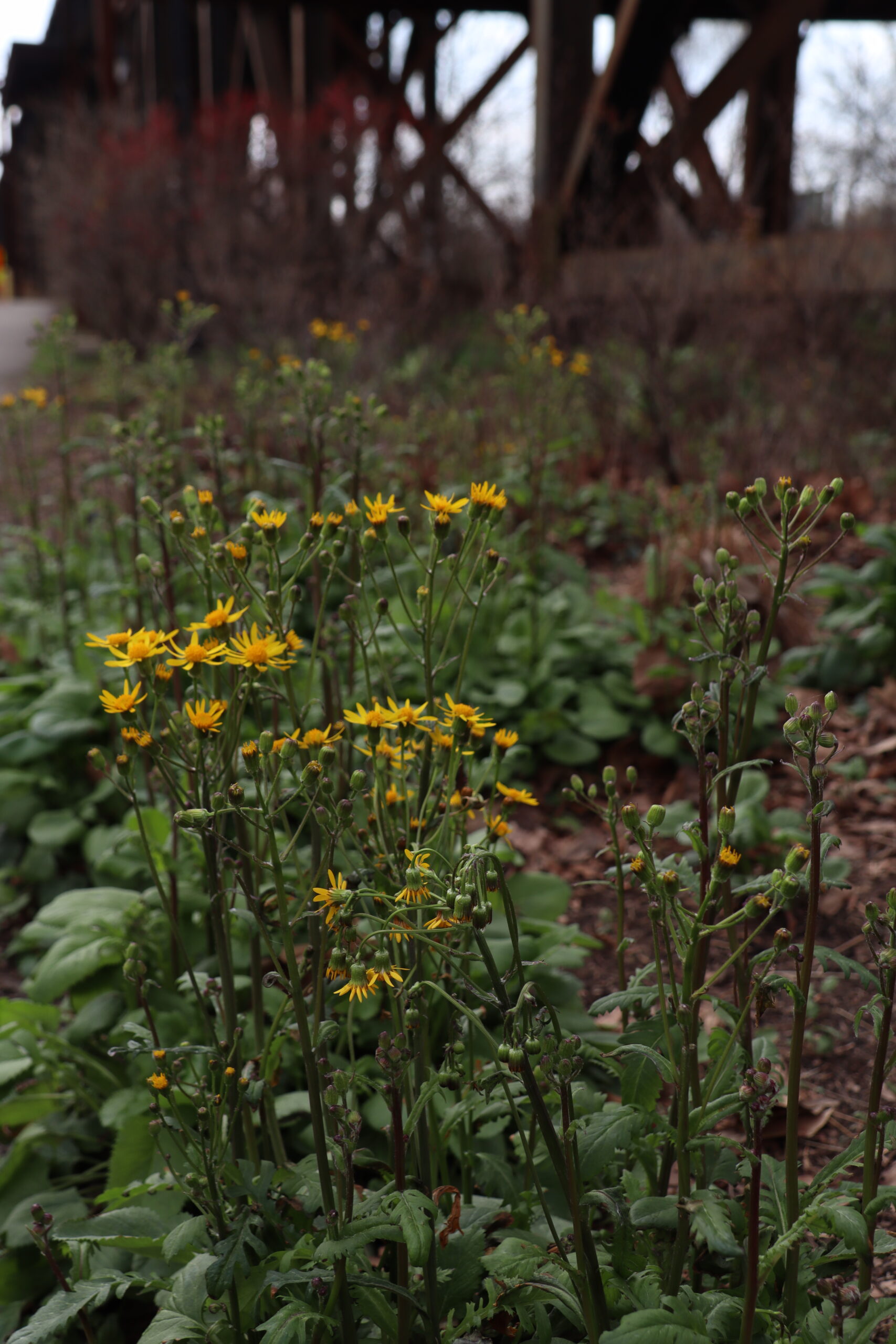Author: Lisa Trapp
We have highlighted a number of showy native plants on our website, Virginia Bluebells (Mertensia virginica), Woodland Phlox (Phlox divaricata), Aromatic Aster (Symphotrichum oblongifolium), and Blue False Indigo (Baptisia australis) just to name a few. But there are some wonderful species that do not have the immediate “wow factor” and are still well worth admiring. One such plant is golden ragwort (Packera aurea), not to be confused with Ragweed (Ambrosia artemisiifolia) — a plant known to cause allergy and asthma issues in almost 15% of Americans. Despite its somewhat unfortunate name, golden ragwort, occasionally called golden groundsel, is a workhorse with so much about it to love!

http://www.vaplantatlas.org/
Golden ragwort has delicate, small, daisy-like yellow flowers that are a welcome site in early spring. The flowers shoot up from densely compact growing leaves that hug the soil. They grow thickly and make an excellent groundcover over time. These plants are historically native to the capital region, and were thought to have medicinal properties used largely in poultices. It should be noted that the leaves are known today to be toxic, and can cause irritation when touched or ingested.
Though beloved as an excellent ground cover, perhaps one of the shining attributes of this plant is how beneficial it is to our local pollinators. Golden ragwort is an early and long bloomer, with flowers appearing as early as March and running all the way through August. These sprightly blooms provide some of the earliest nectar sources for emerging pollinators. Spring food sources are especially important to hungry pollinators just emerging from hibernation. The pollen and nectar from golden ragwort attracts solitary bees like sweat bees, cuckoo bees, and carpenter bees. They are also beneficial to fireflies by providing low cover and tall stems for landing and taking off from, and are greatly utilized by a range of butterflies and moths. Even seed-eating songbirds are attracted to the seedheads. Golden ragwort is truly a crowd pleaser for the whole ecosystem.

These semi evergreen beauties, freely self seed and spread via underground rhizomes. They even bloom in shadier locations. If you are looking to bring some yellow color into your spring and summer gardens, and for a plant with strong wildlife value that’s a hardy groundcover, consider adding this floral patch of sunshine to your landscape. It does very well in urban environments, and can be spotted in the gardens all along the Low Line, and at either end in Great Shiplock Park and the Low Line Green!
REFERENCES:
http://www.vaplantatlas.org/index.php?do=plant&plant=2209&search=Search
https://www.missouribotanicalgarden.org/PlantFinder/PlantFinderDetails.aspx?kempercode=l350
https://www.wildflower.org/plants/result.php?id_plant=PAAU3
https://aafa.org/allergies/types-of-allergies/pollen-allergy/ragweed-pollen/#


